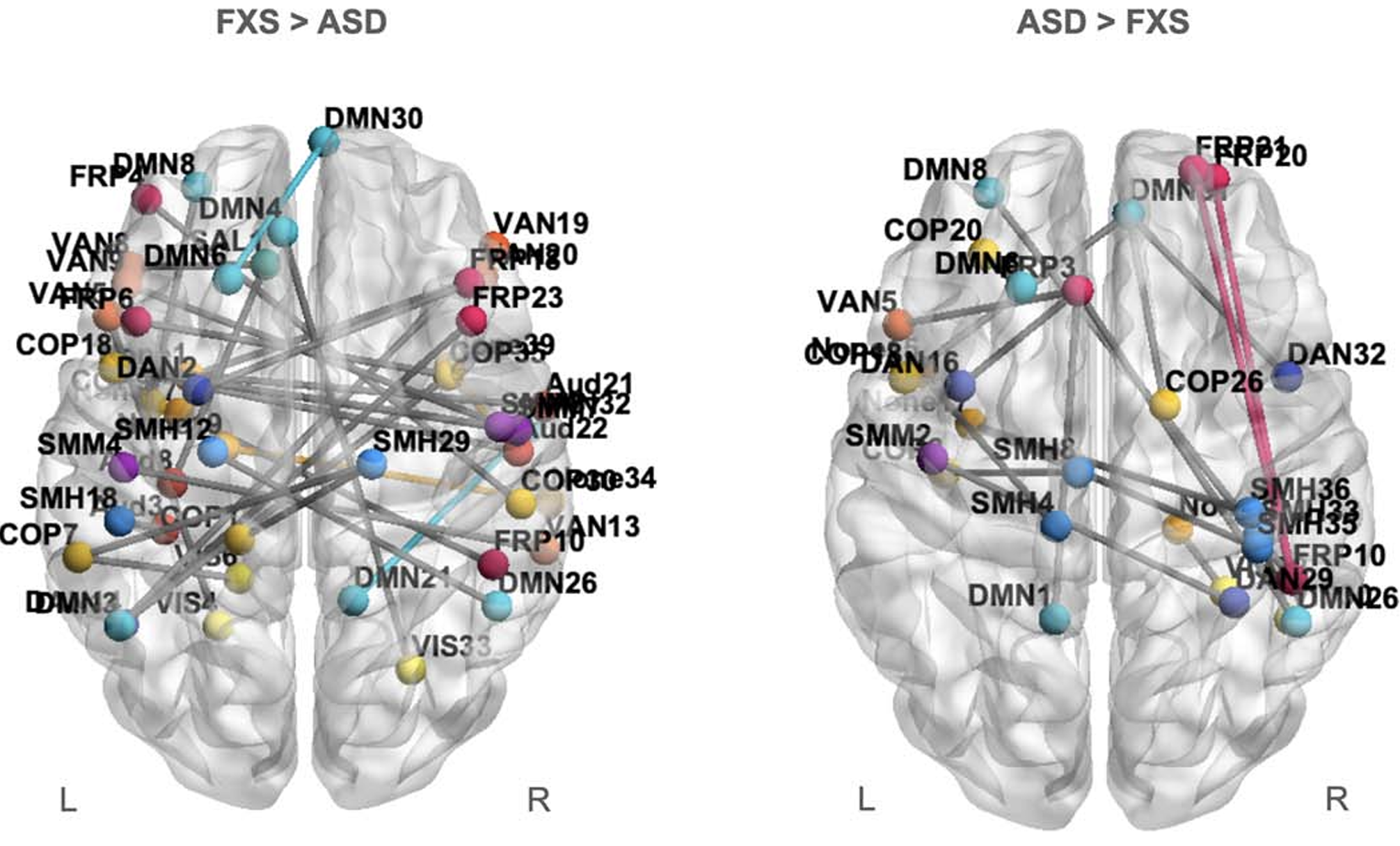Abstract
Boys with fragile X syndrome (FXS), the leading known genetic cause of autism spectrum disorder (ASD), demonstrate significant impairments in social gaze and associated weaknesses in communication, social interaction, and other areas of adaptive functioning. Little is known, however, concerning the impact of behavioral treatments for these behaviors on functional brain connectivity in this population. As part of a larger study, boys with FXS (mean age 13.23 +/- 2.31 years) and comparison boys with ASD (mean age 12.15 +/- 2.76 years) received resting-state magnetic resonance imaging scans prior to and following social gaze training administered by a trained behavior therapist in our laboratory. Network-agnostic connectome-based predictive modeling (CPM) of pre-treatment RSFC data revealed a set of positive (FXS > ASD) and negative (FXS < ASD) edges that differentiated the groups significantly and consistently across all folds of cross-validation. Following administration of the brief training, the FXS and ASD groups demonstrated normalization of connectivity differences. The divergence in the spatial pattern of normalization response, based on functional connectivity differences pre-treatment, suggests a unique pattern of response to treatment in the FXS and ASD groups. These results support using connectome-based predictive modeling as an outcome measure in clinical trials.
